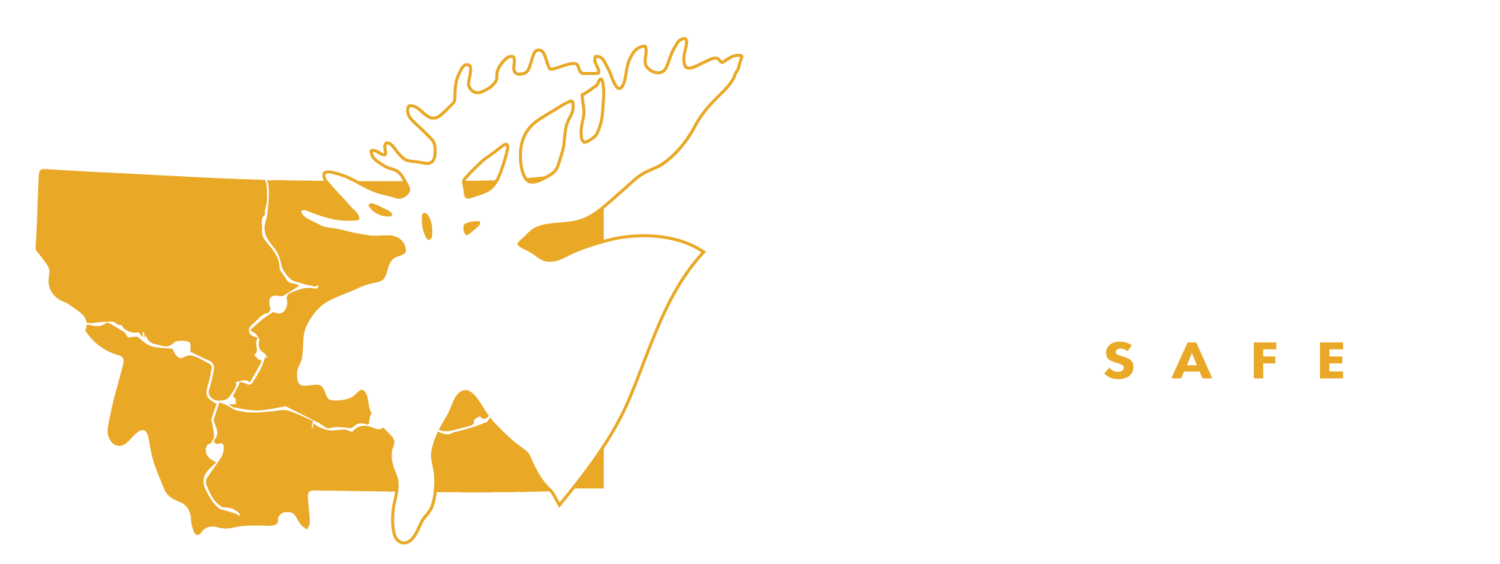Opinion Piece - Collaborative partnerships are key to successful wildlife crossing projects
This piece was originally published in the Bozeman Daily Chronicle.
Most of us have a story about a wildlife collision. Whether it’s a scary drive following a near miss, encountering an accident late at night, or experiencing the grief of hitting an animal and the stress of vehicle repair. It can feel like we all have grimly accepted the fact that if you live (and drive) here long enough, you’re going to be involved in a vehicle-wildlife collision. It’s just the severity that’s the question.
The Chronicle’s recent editorial, “Montana should make wildlife crossing projects a top priority,” outlines the situation and calls for prompt action. After all, Montanans take pride in our state being one of the last strongholds for wild open spaces that support the iconic wildlife species we cherish. Across the West, transportation infrastructure is one of the primary threats to daily and seasonal wildlife movements and migrations. The ability to move throughout essential habitat to meet basic needs is critical to ensuring healthy wildlife populations are a part of Montana for generations to come.
As the editorial states, wildlife overpasses and underpasses with fencing are highly effective in reducing collisions, improving driver safety, and enhancing the ability of wildlife to move across landscapes. Montana should absolutely prioritize wildlife crossing infrastructure, but it is also crucial we are doing so in a way that ensures those projects have the best possible chance of effectiveness.
The Greater Yellowstone Coalition has worked closely with state transportation departments, state wildlife agencies, and NGO partners around Greater Yellowstone to secure funding sources and lay the groundwork for innovative solutions that make roads safer for people and wildlife. What we’ve seen time and again is that projects are most successful when they are located where animals naturally try to cross roads, land on both sides of the project is protected from development, and communities are included throughout the process.
Thankfully, there are several positive partnership efforts working tirelessly to set the stage for thoughtful, on-the-ground investments that will improve safe wildlife passage in Montana. These partnerships have created an avenue for Montana Department of Transportation to partner with NGOs, other state and federal agencies, and local governments to apply for new federal funding opportunities.
Yellowstone Safe Passages, for example, is a community-led effort in Paradise Valley working with landowners and citizen scientists to identify projects that will improve human and wildlife safety along U.S. Highway 89 — a notorious hotspot for wildlife collisions. The Missoula Regional Connectivity Group is a coalition of organizations working to use the best available science and realities on the ground to identify feasible short-term projects that would enhance wildlife passage, primarily along Interstate 90. Montanans for Safe Wildlife Passage is a statewide coalition of NGOs working in partnership with Montana Department of Transportation and Montana Fish, Wildlife & Parks to build a foundation of resources, information, and knowledge for broad stakeholder engagement to address wildlife and transportation challenges in Montana. The same partnership is working to identify areas of greatest need for highway improvements based on wildlife-vehicle collisions and important areas for wildlife movement and conservation.
These committed partnerships are setting a solid foundation for infrastructure improvements on Montana highways. The new federal wildlife crossings program included in the recently passed
Infrastructure Investment and Jobs Act is a competitive grant opportunity that sets forth several considerations for how projects will be evaluated. The criteria suggest the importance of data driven projects with strong partnerships – making the above-mentioned collaborative efforts a key component of Montana’s ability to secure federal funds.
Montana now has a tremendous opportunity to leverage the bedrock of productive collaboration between MDT, FWP, and NGOs to take advantage of new funding opportunities and implement on-the-ground projects that improve driver safety and wildlife passage. I have seen first-hand the deep commitment to addressing wildlife-vehicle conflict by our partners at the state agencies and look forward to celebrating progress on-the-ground in the months and years ahead.
Brooke Shifrin is the Wildlife Conservation Coordinator for the Greater Yellowstone Coalition and co-coordinator for Montanans for Safe Wildlife Passage.
